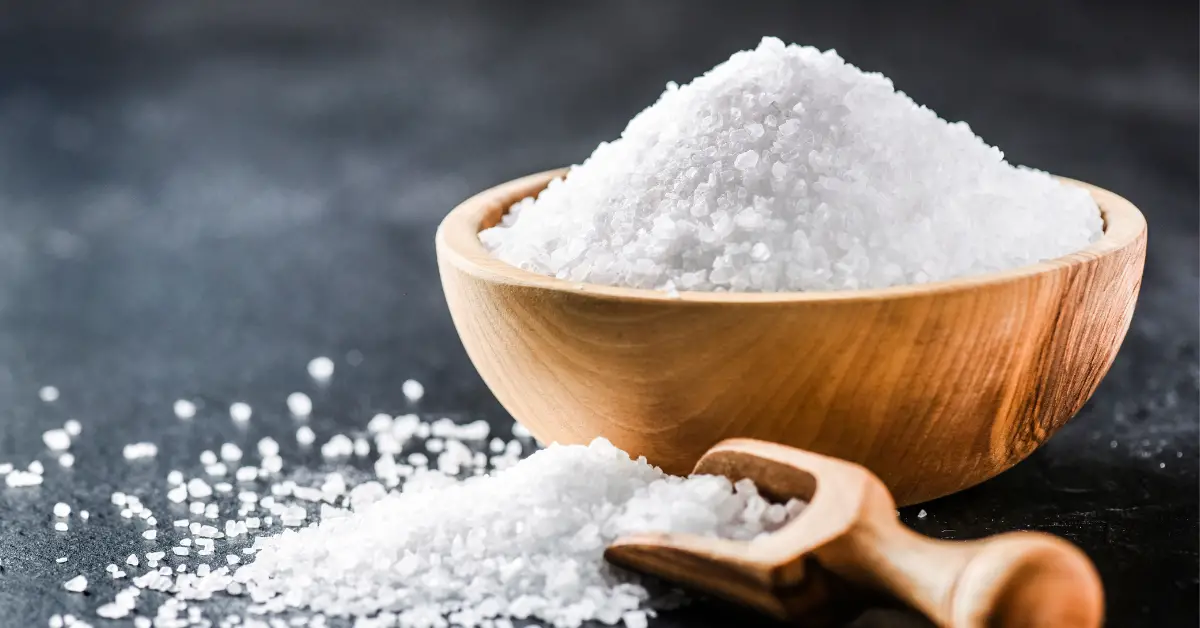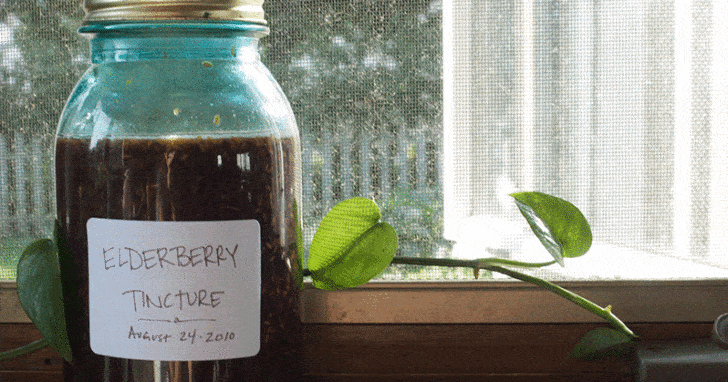Sodium chloride, commonly known as salt, has a variety of applications in and around our homes, not only for cooking but also for cleaning, maintenance, and improvement.
This article offers a comprehensive compilation of various uses for salt, along with step-by-step instructions and relevant data to support each application. One of the first uses is the effective use of salt for eliminating ants in your home.
15 Household Uses for Salt
1. Eliminate Ants by Sprinkling Salt Around Your House
Using salt as a natural, chemical-free, and cost-effective solution for repelling ants is environmentally friendly and safe compared to commercial insecticides. Salt’s sodium content deters ants, and a study in the Journal of Economic Entomology found that sodium chloride effectively repelled various ant species, including Argentine ants and pavement ants.
To use salt for ant control:
Step 1: Identify where ants have been seen, focusing on openings, cracks, and crevices through which they may enter your home.
Step 2: Sprinkle a thin layer of salt around affected areas to create an ant-repelling barrier.
Step 3: Repeat the process as necessary to maintain an ant-free environment.
2. Absorb Moisture and Dehumidify
Salt is an excellent natural dehumidifier that can help absorb excess moisture in your home, preventing mold and mildew growth. A 2021 study published in Drying Technology found that salt effectively absorbs moisture from the air, making it an ideal dehumidifier.
To use salt as a dehumidifier:
Step 1: Fill a small, open container with salt (a jar or bowl will work well).
Step 2: Place the container in damp or high-humidity areas, such as basements or closets.
Step 3: Replace the salt regularly as it absorbs moisture and becomes saturated.
3. Clean Your Sink and Make It Shine
Salt can help remove stains, grease, and unpleasant odors from your sink. To use salt for cleaning your sink:
Step 1: Mix half a cup of salt with a gallon of hot water.
Step 2: Dip a sponge or cloth into the mixture and scrub your sink thoroughly.
Step 3: Rinse with clean water and dry with a clean cloth.
Although studies on salt for sink cleaning are limited, salt’s cleaning properties are well-known due to its abrasive nature and ability to break down grease and stains.
4. Restore Shine to Brass, Copper, and Silverware
When combined with vinegar, salt can restore the shine to your brass, copper, and silverware. In fact, a mixture of salt and vinegar effectively is known to remove tarnish from silver objects without causing damage.
To use salt for polishing:
Step 1: Mix equal parts salt and vinegar in a bowl.
Step 2: Apply the mixture to tarnished items using a soft cloth.
Step 3: Rub gently until the tarnish is removed. Step 4: Rinse with water and dry with a clean cloth.
5. Clean Car and House Windows
A saltwater solution can help remove stubborn stains and dirt from your car and house windows. To use salt for window cleaning:
Step 1: Mix two tablespoons of salt with a gallon of water.
Step 2: Use a sponge or cloth to apply the solution to your windows.
Step 3: Wipe clean with a squeegee or clean cloth.
Although specific studies on salt for window cleaning are scarce, salt’s cleaning properties are well-known due to its abrasive nature and ability to break down dirt and stains.

6. Exfoliate and Rejuvenate Skin
When combined with essential oils, salt can be used as a natural exfoliant for your skin. Sea salt also contains essential nutrients such as potassium and magnesium, known to have antibacterial and exfoliating qualities that benefit the skin.
To use salt as a skin exfoliator:
Step 1: Mix equal parts salt and your choice of essential oil, such as lavender or olive oil, in a small bowl.
Step 2: Gently massage the mixture onto your face using circular motions, avoiding the eye area.
Step 3: Allow the mixture to sit on your face for a few minutes. Step 4: Rinse your face with cold water and pat dry.
7. Whiten Teeth
Salt, when mixed with baking soda, can help whiten your teeth and improve oral health. A 2017 study found that a combination of salt and baking soda effectively reduced plaque and improved overall oral health. To use salt for teeth whitening:
Step 1: Mix equal parts salt and baking soda in a small container.
Step 2: Wet your toothbrush and dip it into the mixture.
Step 3: Brush your teeth as usual, then rinse thoroughly with water.
8. Soothe Toothache
Salt can help relieve mouth sores and toothaches by reducing inflammation and inhibiting bacterial growth. A study in the Evidence-Based Dentistry found that saltwater rinses effectively reduced postoperative pain and inflammation in dental patients.
To use salt to soothe a toothache:
Step 1: Dissolve a teaspoon of salt in a glass of warm water.
Step 2: Swish the solution in your mouth for 30 seconds, then spit it out.
Step 3: Repeat as needed for relief.
9. Prevent Clothes From Fading
Adding salt to your washing machine can help prevent your clothes from fading. Thanks to its chloride content, ionic properties, and neutral pH balance, salt is a natural and effective way to keep your clothes from fading and keep them looking clean and vibrant.
To use salt to prevent clothes from fading:
Step 1: Add a quarter cup of salt to your washing machine before adding clothes.
Step 2: Proceed with your regular laundry routine.
10. Restore Color to Rugs
Salt can help bring back the original color and shine to your carpets and rugs.
To use salt to restore your rugs:
Step 1: Mix equal parts water and salt in a large bucket or container.
Step 2: Submerge your rug or carpet in the solution and let it soak for a few minutes.
Step 3: Remove the rug and rinse it thoroughly with clean water.
Step 4: Allow the rug to dry in the sun or use a wet vacuum to remove excess water.

11. Eliminate Wine and Juice Stains
With its absorbent nature and ability to break down stains, salt can help absorb and remove wine and juice stains from fabrics. To use salt for stain removal:
Step 1: Immediately after spilling wine or juice on your fabric, pour a generous amount of salt onto the stain.
Step 2: Allow the salt to sit for a few minutes as it absorbs the liquid.
Step 3: Brush off the salt and rinse the fabric with cold water. Step 4: Launder the fabric as usual.
12. Relieve a Sore Throat
Gargling with a saltwater solution can help relieve a sore throat. A randomized controlled trial published in the Journal of Complementary and Alternative Medical Research found that this simple remedy can reduce pain and other symptoms associated with a sore throat.
To use salt for sore throat relief:
Step 1: Dissolve a teaspoon of salt in a cup of warm water.
Step 2: Gargle the solution for about 30 seconds, then spit it out.
Step 3: Repeat the process several times a day as needed for relief.
13. Keep Flowers Fresh
Adding salt to the water in a vase can help keep cut flowers fresh for a longer period. Salt can eliminate bacteria, stimulate water uptake, and provide flowers with necessary nutrients. A study in Horticultural Science and Technology found that adding a sodium solution to the vase water improved the longevity of cut flowers.
To use salt for keeping flowers fresh:
Step 1: Fill a vase with water and add a teaspoon of salt.
Step 2: Mix the solution until the salt dissolves.
Step 3: Place the cut flowers in the vase and replace the water every two to three days.
14. Deodorize Shoes
Salt, when combined with baking soda, can help eliminate unpleasant odors from your shoes. While specific studies on salt for shoe deodorization are limited, the deodorizing properties of salt and baking soda are well-known due to their ability to absorb moisture and neutralize odors.
To use salt to deodorize shoes:
Step 1: Mix equal parts salt and baking soda in a small container.
Step 2: Fill a coffee filter or napkin with the mixture and tie it securely.
Step 3: Place the filled filter or napkin in the shoes and let it sit overnight.
Step 4: Remove the filter or napkin the next day and enjoy odor-free shoes.
15. Clean Stained Cups
Salt can help remove stubborn coffee and tea stains from your cups.
To use salt for cleaning stained cups:
Step 1: Sprinkle a generous amount of salt onto a dampened lemon peel or sponge.
Step 2: Rub the salted lemon peel or sponge around the stained area in a circular motion.
Step 3: Rinse the cup with water and dry with a clean cloth.

My Personal RX:
Embracing natural, chemical-free ingredients in household, beauty, and health products is crucial for our well-being. By prioritizing these choices, we reduce our exposure to potentially harmful substances, support a healthier environment, and promote overall wellness.
Nurture your well-being inside out with my Personal RX:
1. Opt for organic produce and whole foods whenever possible, reducing exposure to pesticides and supporting sustainable farming practices.
2. Explore natural alternatives for household cleaning and personal care products, utilizing ingredients like salt, vinegar, and baking soda for effective and eco-friendly solutions.
3. Empower yourself to navigate labels and prioritize healthier options with my Toxic Ingredient Guide.
4. Support your nutritional needs with Men’s and Women’s Core Essentials supplements, specially formulated to provide targeted nutrition and protection for men and women.
Salt is a versatile, eco-friendly, and cost-effective solution for various household uses. From eliminating ants to keeping flowers fresh, this common pantry staple proves to be an invaluable resource for maintaining a clean and healthy home.
With its natural cleaning and deodorizing properties, salt offers an excellent alternative to harsh chemicals and commercial products. By incorporating these simple and practical uses of salt into your daily routine, you can enjoy a cleaner, fresher, and more comfortable living environment.

Sources:
- https://academic.oup.com/jee/article/93/4/1256/2217274
- https://www.tandfonline.com/doi/abs/10.1080/07373937.2021.1885042
- https://pubmed.ncbi.nlm.nih.gov/28914244/
- https://www.nature.com/articles/6401084?utm_medium=affiliate&utm_source=commission_junction&utm_campaign=CONR_PF018_ECOM_GL_PHSS_ALWYS_DEEPLINK&utm_content=textlink&utm_term=PID100090071&CJEVENT=43faa695e89811ed80c09f5a0a18b8f9
- https://www.researchgate.net/profile/Ab-Zulkiflee/publication/335681220_Randomised_Controlled_Trial_of_Salt_Solution_Sodium_Chloride_Mouth_Wash_vs_Thymol_Glycerine_Usage_in_Sore_Throat_with_Non_Bacterial_Pharyngitis/links/5d972cd6a6fdccfd0e75090e/Randomised-Controlled-Trial-of-Salt-Solution-Sodium-Chloride-Mouth-Wash-vs-Thymol-Glycerine-Usage-in-Sore-Throat-with-Non-Bacterial-Pharyngitis.pdf
- https://www.hst-j.org/articles/xml/90V9/




















